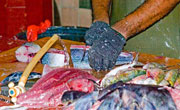| Hudhufushi - Dhiffushimaadhoo Area Should be Declared as Nature Reserve |
 |
| During the last few years, we have been witnessing a rapid human encroachment on the terrestrial vegetation, reef and wetland ecosystems of uninhabited islands and inhabited islands in the Maldives... read more |
| |
| When Groundwater Turns Deadly |
 |
| The sad deaths of five young men in a well in Malé Fish Market on 3 March 2008 (Youth Day in the Maldives) shocked the people of the Maldives... read more |
| |
| Towards an Artificial Paradise on Earth |
 |
| The Government has recently announced plans to develop ten artificial islands by reclaiming natural lagoons of inhabited islands... read more |
| |
|